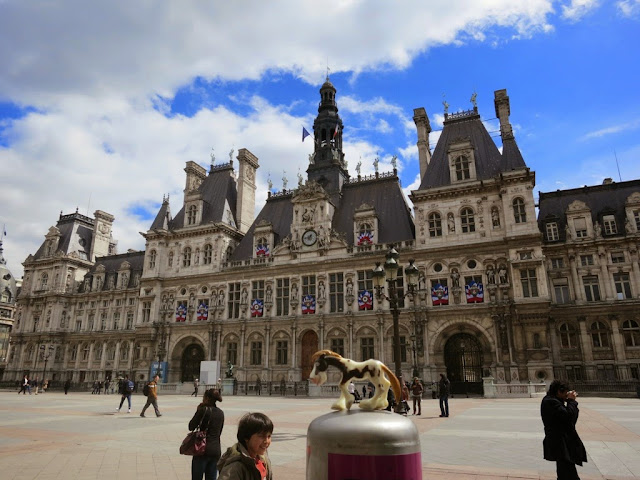Safety first! Everybody puts on the life jacket.
The river is calm, even the flag does not move.
We pass under the Alexander III bridge that I have already shown you when we were strolling down the Champs Elysees.
Finally, we arrive to the Tower. It was constructed in 1889 as preparation for the World Exhibiion (I am sure that you rememebr the Big and Small Palace built for the same purpose) by the company of the engineer Gustave Eiffel. By the way, I discovered that his original name was Bönickhausen. Just imagine "La Tour Bönickhausen".
The queue to the entry is enourmous. You can hear all the languages.
Finally I got to the lift. It uses huge hydraulic pumps that go up and down as the lift moves throught the pillars.
Finally we get to the top. 280 meteres my friends. The tower used to be the tallest building in the world from 1889 to 1930 when GE Building and then the Empire State Building were constructed.
Obviously, the biggest attraction of the Eiffel Tower is the view. So let's tick off the most important landmarks of the city. First the river we came here by.
Then, turning clock-wise, the Grand Palace and the Alexander III bridge.
The left bank of the river next to the Tower.
The Invalides and far in the back Pantheon.
The Fields of Mars. Really impressive seen from the top.
The far distant financial district of la Defense.
Finally, the Trocadero with Palais de Chaillot, that houses museums and a theater, just on the other side of the river.
Did you know that the Eiffel Towe created lots of controversies? Many people considered that it is simply very ugly. Personally I believe it is beautiful. But everyone has to judge by himself.




























































